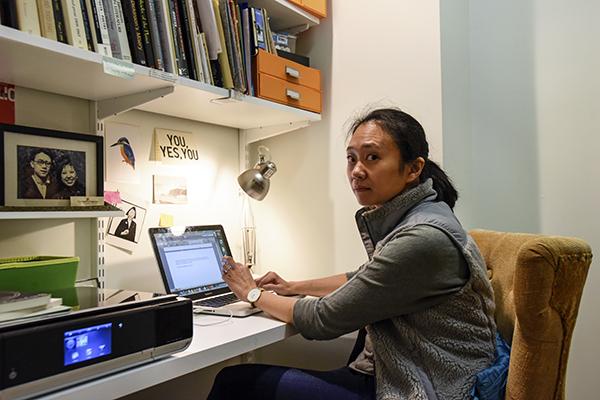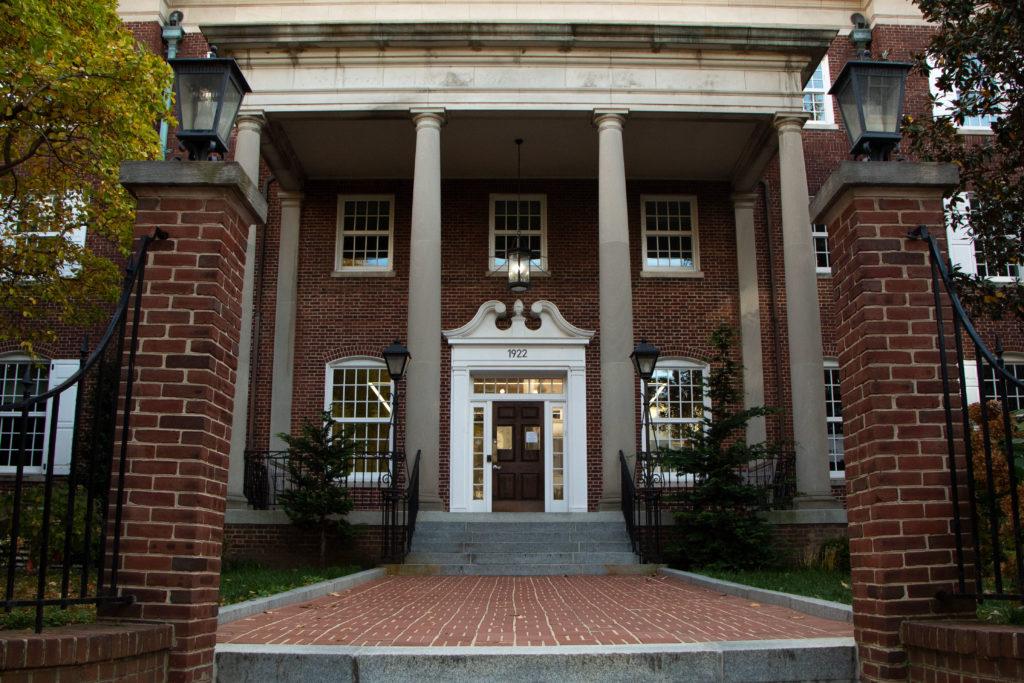When Aaron Hamburger, a part-time faculty member, learned he would no longer be teaching creative writing at GW, he felt he had lost a place he “really thought of as home.”
Hamburger isn’t the only adjunct faculty member in the program who won’t be returning next semester. The creative writing program will lose eight faculty members in January because of budget cuts, the program’s director, Lisa Page, confirmed this month. She called it a “major loss” for creative writing at GW.
“This is quite a blow for creative writing,” Page said. “We will still be able to offer an outstanding product, but it is a big loss.”
This semester, most introduction to creative writing class sections were divided up among eight adjunct faculty members. But because the program will have fewer faculty members to teach courses, only four sections of introduction to creative writing will be offered – a steep drop from the nine offered now.
Dean of the Columbian College of Arts and Sciences Ben Vinson, said in an email that “budgetary pressures” stemming from a drop in graduate student enrollment across the University led to the administration’s decision to cut adjunct faculty positions from the program.
GW put a hold on hiring and cut each administrative division’s budget by 5 percent last fall. The music department was cut by 40 percent because of the budget troubles.
Vinson called the creative writing program a “critical component” of the English department, and said expanding and contracting faculty numbers occasionally is normal. He said the college is working to hire a tenure-track creative writing faculty member.
“While we did reduce the number of sections taught by part-time instructors in creative writing, our commitment to filling a tenure-track position demonstrates Columbian College’s commitment to creative writing at GW,” Vinson said.
Robert McRuer, the chair of the English department, said in an email that members of the department were “strongly opposed” to cuts in creative writing,
With fewer class sections offered, McRuer said department heads will have to increase the number of students who can be in each section of the courses. Classes were previously capped at 15 students, which allowed students more individualized opportunities to workshop writing with professors, he said.
The cap has already increased this semester to 19 students per section and is no longer in line with the Association of Writers and Writing Programs’ recommendation that creative writing classes have between 12 and 15 students.
“We made this case strongly in the spring and hope that, in the future, we can return to the lower cap and more sections,” McRuer said.
Those courses will now be taught by four GW Ph.D. English students, who have earned master’s of fine arts degrees.
Page said the cuts could pose future problems for the program because a large number of students enroll in the introductory course to fulfill a G-PAC art requirement. Thirty-two courses offered this semester can fulfill this requirement.
The requirements for creative writing majors and minors will remain the same, and all other courses and full-time faculty won’t be impacted.
Page said administrators – who she declined to name – informed her of this “mandate” last semester. She said she learned about the cutback without warning and administrators did not work with her to find an alternative solution.
“We really tried very hard to resist this and to see if there were other alternatives to see how else the money could be cut,” Page said.
Jennifer Chang, an assistant professor of English, said cuts to adjunct faculty will also make full time instructors’ jobs more difficult because they will have to take on more classes and have less time to spend one on one with students.
Just this year, the creative writing program offered new courses for major and minor students, which Chang said administrators were “enthusiastic” about introducing. But next semester, she says there won’t be enough faculty members to cover those new courses.
“The core of creative writing pedagogy is mentorship and working close with creative writing students who want to write that thesis or have a career with a creative writing focus, and it will be hard to do with full-time creative writing faculty when they’re covering so many bases,” Chang said.
Other programs in the Columbian College have suffered as officials have tightened budgets across the University. Last semester, the chair of the math department said faculty numbers were being cut as adjunct faculty were replacing full-time faculty.
Page said adjunct professors of creative writing are “seasoned, established writers,” which gave students the opportunity to work alongside professional writers, and often inspired them to further pursue creative writing.
Hamburger, a novelist and freelance writer who has been an adjunct professor of creative writing at GW since 2013, said he has found teaching “tremendously rewarding.”
He said there are other areas officials should trim costs first, and use cutting jobs as a last resort.
“I think the University should try to marshal its resources to educate people and not to have as many buffets,” Hamburger said.
Lara Payne, a poet who has been an adjunct faculty member in the program for 10 years, said she was given plenty of notice for her job ending in January, but “there aren’t a lot of creative writing faculty positions floating around in the world.” She said she has always had to work as an adjunct professor because poetry doesn’t bring in enough money on its own.
She said the administration’s decision to cut the program calls to question the officials’ priorities for the arts. University President Steven Knapp has said in the past that he has prioritized arts education and opportunities, a claim some faculty have questioned after cuts to arts departments.
“Why is the University comfortable cutting this?” Payne said. “Creative writing may not lead to a lot of jobs itself, but it makes for more well-rounded students.”








